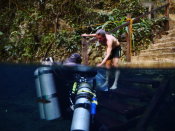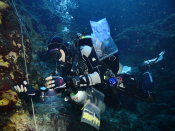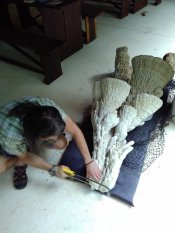Hells Bells
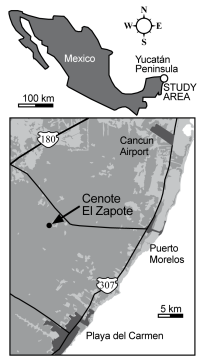
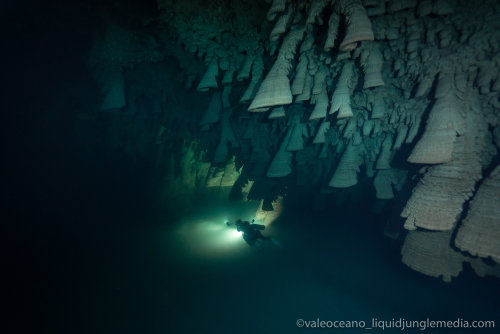 Hells Bells speleothems from El Zapote cenote
Hells Bells speleothems from El Zapote cenote
Bell-shaped speleothemes, termed as „Hells Bells“ were first discovered by local divers in 2008. They grow from the ceiling and the walls from ~30–40 m water depth (~100–130 ft) and are up to 2 m in size (7 ft). They consist of large crystals of the mineral calcite (CaCO3).
At first it was discovered that Hells Bells grow under water. This is unusual because speleothemes such as stalagmites normally grow in caves under air.
Hells Bells grow in a narrow zone of increased micobiological activity within the water column called the redoxcline. In this zone, microorganisms generate eneregy from H2S consumption and take up CO2 from the water to build up their cells. This process leads to supersaturation of calcite and allows the Hells Bells to grow.
The position of the redoxcline, hence the zone of Hells Bells formation, is moving up and down depending on the rainfall in the area. This is why Hells Bells appear over a vertical zone of 10 m within the water column.
Microorganisms on the surfaces of the Hells Bells may also play a role in their formation, this is currently under investigation.
Finally, Hells Bells grow since at least 100,000 years. Researchers are currently investigating the potential of Hells Bells as a paleoenvironmental archive, which allow to extract information about climate, vegetation and the annual rainfall of the past.
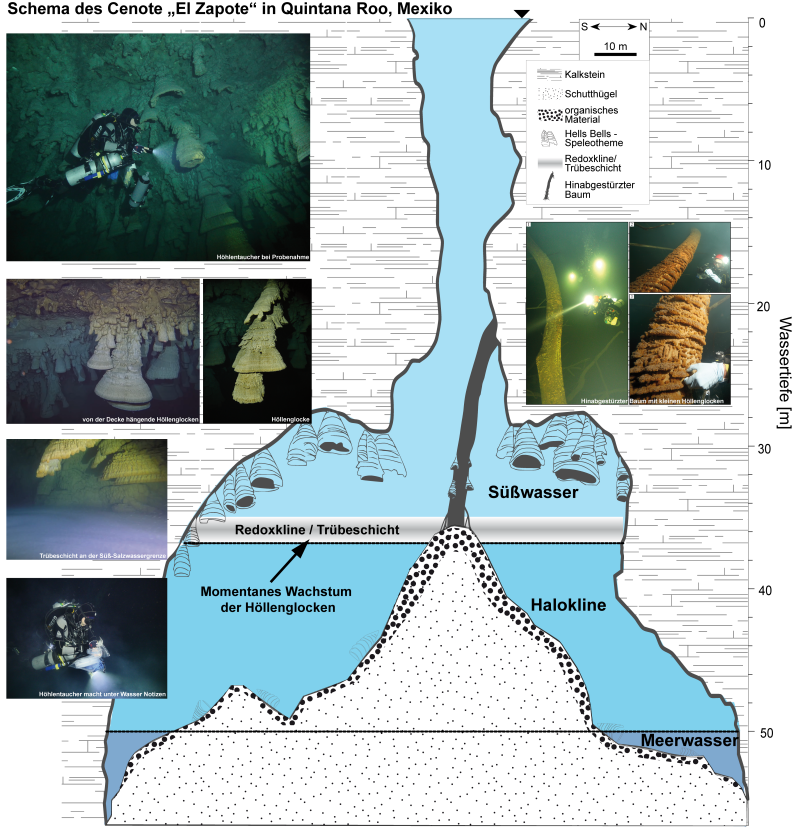
further information: https://www.uni-heidelberg.de/presse/news2017/pm20171124_unique_underwater_stalactites.html




